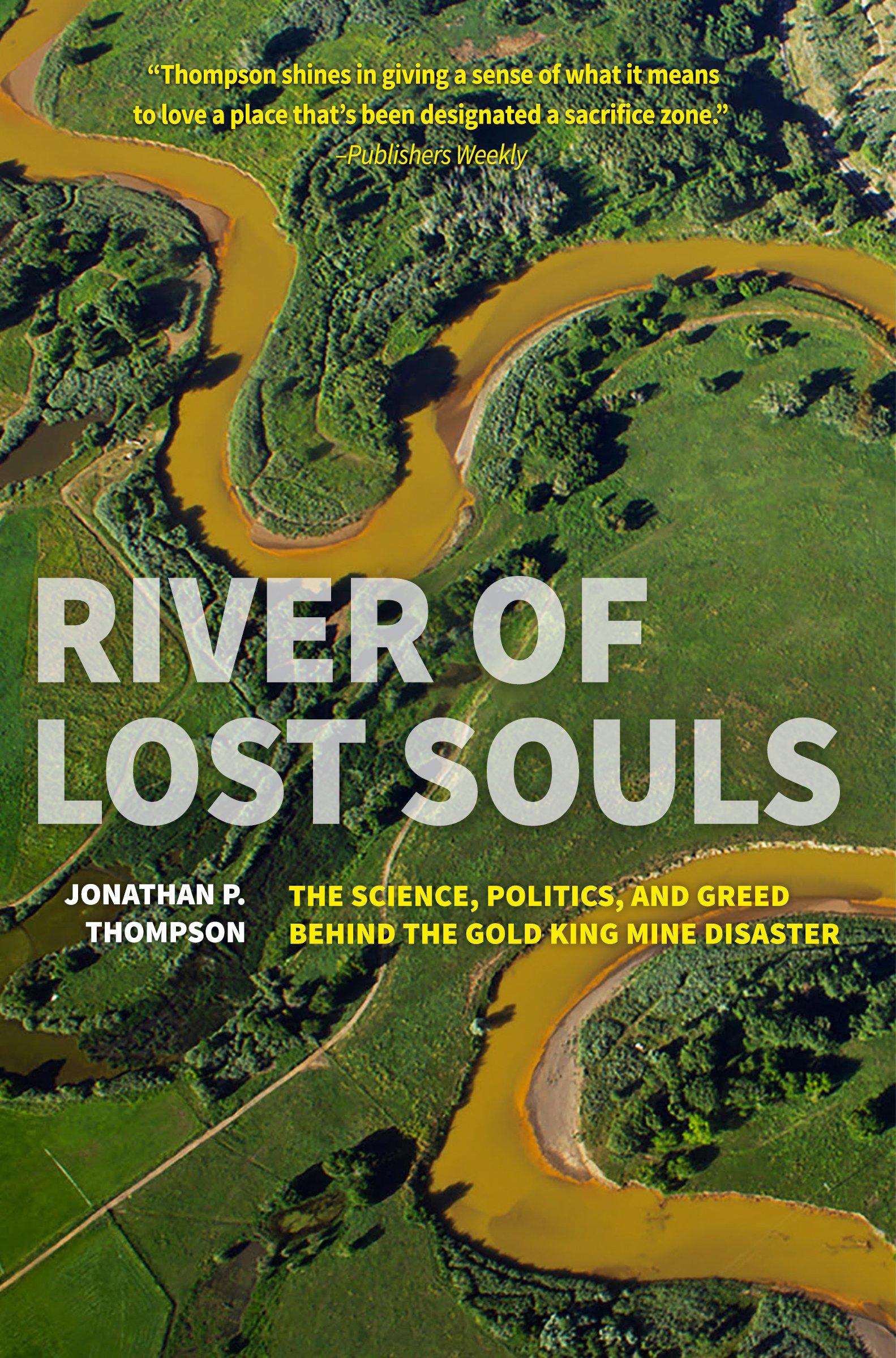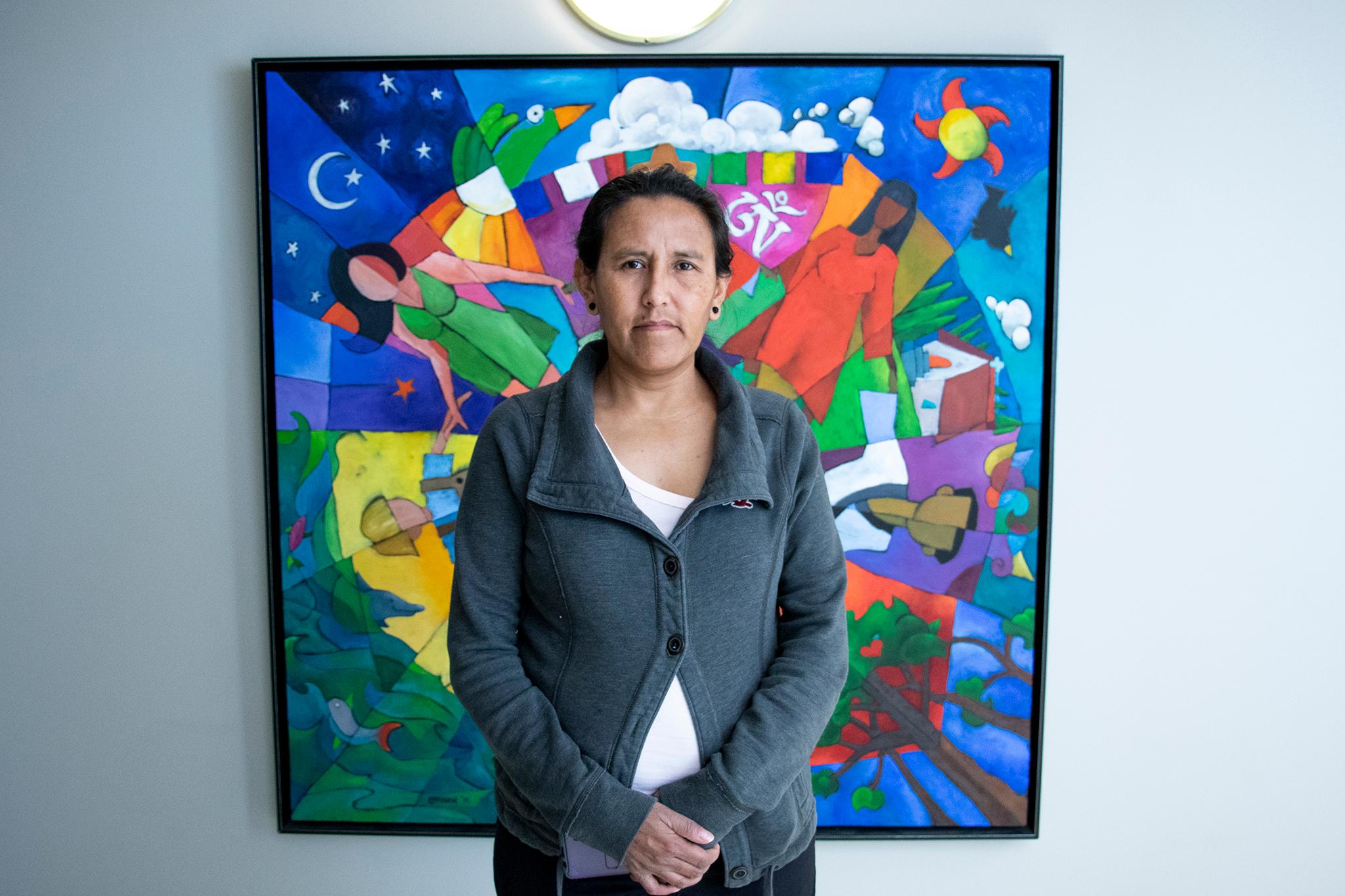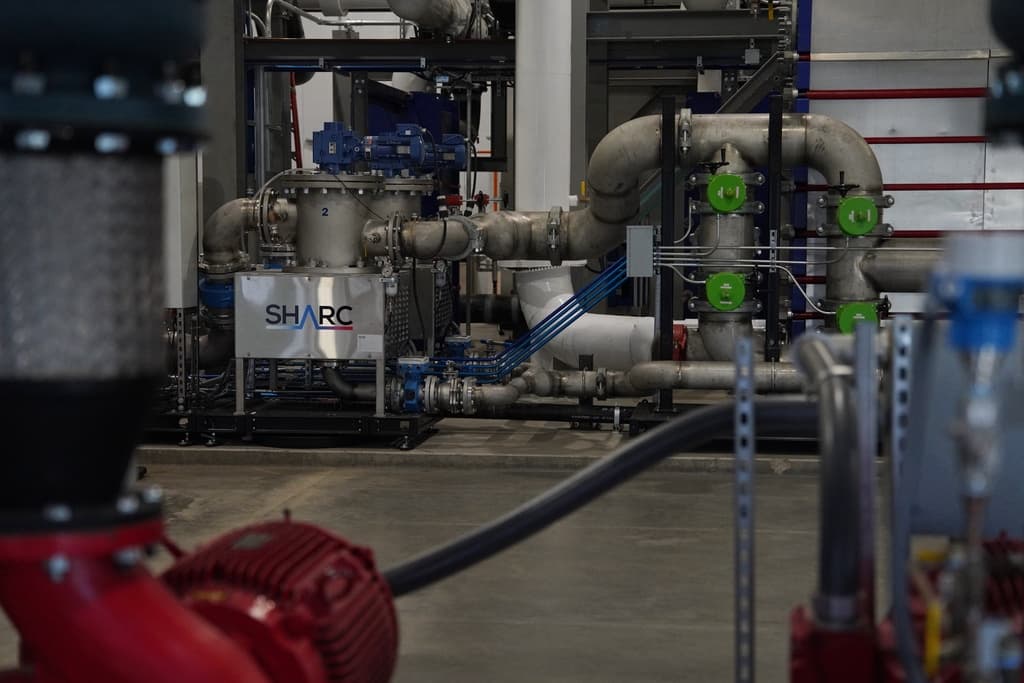
Jonathan Thompson remembers the day the Gold King Mine near Silverton spilled millions of gallons of toxic waste into Cement Creek and the Animas River in 2015.
The award-winning environmental journalist lives part time in Durango, through which the Animas flows. He was working in his home office when he saw news of the spill on Twitter. He raced upstream in his car. “It was shocking,” he said. “The color was like, I compare it to Tang that has been maybe mixed too thickly, like you let your kid go ahead and mix it as thick as he wanted to, and it turns into this kind of thick, opaque orangish-yellow stuff.”
Now almost three years later, Thompson has published “River of Lost Souls,” a book that puts the Gold King disaster in the broader context of mining and pollution in Southwest Colorado since the 1800s. Thompson gives a talk Saturday evening at Denver's Book Bar about his work. CPR’s Grace Hood, who also covered the Gold King Mine disaster, spoke with Thompson. Edited highlights and a full transcript are below.
Highlights
How he first heard about the spill:
"I was actually in my home office. I saw this on Twitter that this had happened, and that this plume of nasty stuff was headed our way, downstream from Silverton, which is about 50 miles upstream from Durango, and so I wanted to certainly go see it. So I raced into my car, and ran out, and crossed the river in Durango, and there, there was just the normal scene that there always is, in the middle of the summer -- which is a lot of people on and in the river. Dozens of them, and the river was nice and green, and the normal color it usually is ... and that's because it hadn't reached there yet.
So I raced upstream to the next crossing of the river, which is about seven miles above Durango, and I drove out there, and I got to where I could see the river, and I was, it was shocking. The color was like, I compare it to Tang that has been maybe mixed too thickly, like you let your kid go ahead and mix it as thick as he wanted to, and it turns into this kind of thick, opaque orangish yellow stuff."
Why he wasn't that surprised by what he was seeing:
"Mining actually started here in the 1870s but during the 1880s is when milling started and milling is what gives it basically more of an industrial feel. It's not a bunch of guys with picks and stuff, it's a much larger scale phenomenon. It was not that long after that, I mean acid mine drainage started pretty early on, but people started really noticing the problems in the late 1880s to the early 1890s in this region when the miners were dumping the tailings, which is the waste from milling. They were dumping that straight into the rivers. They were running downstream, just like the Gold King Mine spill did, downstream for at least a hundred miles.
It was messing up the farmer's ditches. It was messing up their crops and it was messing up their drinking water because at the time, of course, they're drinking right out of the river. Interestingly enough, and this is something that gets lost a lot, the farmers fought back. Beginning in the 1880s, especially on the Front Range, on Clear Creek there was a major movement of farmers and downstreamers, as I like to call them, who fought back against this. … It wasn't until 1935 that the Colorado Supreme Court finally said, 'You know what? You guys have to do something different and you have to start containing that tailings instead of dumping it in the river.'"
Why Silverton town leaders decided to pursue Superfund status:
"The community has kind of pushed them off and said, no, we don't want to do that. We're going to do this on our own and they've actually done a pretty good job, for the most part. But then more recently, the Gold King spill happened and when that happened the downstreamers, the Durango people and other people downstream, they started pointing their fingers at Silverton and saying, you know what, you guys could have prevented this. If you would have let Superfund in earlier, you might have been able to prevent this.
It made Silverton look bad, and whether that was totally true or not, I don't know, but it did make Silverton look bad. The stigma of being anti-Superfund and as being, possibly, a facilitator of being a hazardous waste dump, was worse than being designated a Superfund site, I think. They also realized that they needed to do something big. And something big needed to be done to finish this cleanup and the locals and the volunteer organizations were simply not up to the task anymore."
Read The Transcript
Nathan Heffel: This is Colorado Matters, from CPR News, I'm Nathan Heffel. The Gold King Mine spill released millions of gallons of orange wastewater into the Animas River in 2015. Environmental Protection Agency workers accidentally triggered the spill while working at the mine. The image let people like Durango resident Scott Wallace heartsick. He stood by the banks of the Animus just days after the spill. Scott Wallace: To see it injured and damaged, and of course the worry is, how long we may face for it to be restored, or come back. It just makes you sad. Nathan Heffel: CPR's Environment Reporter, Grace Hood was in Southwest Colorado covering the spill, and Grace, you've just read a book that shatters a myth many national news outlets imposed on the region. Grace Hood: Yes, so many people saw the orange pictures in 2015. They assumed it was this pristine environment in the midst of one of its first disasters, and in fact, Southwest Colorado has a toxic legacy of abandoned mines and pollution, and there's this new book, River of Lost Souls by Jonathan Thompson, that really gets into that. NH: You read the book, and you also covered the spill, so you sat down with Thompson who has a personal connection to Southwestern Colorado. GH: Jonathan, thanks for joining us. Jonathan Thompson: Thank you. GH: Take us back to the back to the moment when you first heard about the spill. You rushed up in your car, north of Durango to see the water in 2015. What was going through your head? JT: Yeah, I mean it was interesting. I was actually in my home office. I saw this on Twitter that this had happened, and that this plume of nasty stuff was headed our way, downstream from Silverton, which is about 50 miles upstream from Durango, and so I wanted to, certainly go see it. So I raced into my car, and ran out, and crossed the river in Durango, and there, there was just the normal scene that there always is, in the middle of the summer, which is a lot of people on and in the river. Dozens of them, and the river was nice and green, and the normal color usually is. So, and that's because it hadn't reached there yet. So I raced upstream to the next crossing of the river, which is about seven miles above Durango, and I drove out there, and I got to where I could see the river, and I was, it was shocking. The color was like, I compare it to Tang that has been maybe mixed too thickly, like you let your kid go ahead and mix it as thick as he wanted to, and it turns into this kind of thick, opaque orangish-yellow stuff. GH: A shocking sight, and yet you know about the pollution history of the region. JT: Yeah so one of the things that first went through my mind was, "Oh, dear." But then the next thing that kind of went through my mind was, "Well, it's not the first time it's happened." And for one thing, that the color that the river was, was not dramatically different than what I had seen, and Silverton folks at seen, when I lived in Silverton for 10 years upstream with Cement Creek, which is a pretty heavily impacted stream by mining, but it's also got natural metal loading and acid rock drainage in it. So during spring runoff, it's kind of common for it to run a pretty deep orange color. So that kind of offset some of the shock, as well as the fact that, as a kid I had seen the river turn weird colors too, because of tailings pond breaches. At one point a mine up in Silverton, which was still operational when I was a kid in the '70s and the '80s, it burst through the bottom of a lake, which then came through the mine, which was much bigger than the Gold King Spill, and turned the river black, at that point. So I knew the history, and so my sense was yeah this is shocking, but my first sense was that it wasn't that big of a deal, believe it or not. GH: Wow, surprised to hear that. I mean your family's lived in Southwestern Colorado for decades. You grew up there. You live part-time in Durango and you're an environmental journalist. You live in a place with a pretty polluted history. What was it like researching this book? JT: Yeah, so when I set out to write this book, that was one of the things I wanted to talk about was, here was this Gold King spill and it generated so much attention and so much energy but it was treated in a lot of ways, or people saw it like it was some kind of isolated incident. I wanted to give the context to that. And not only the context that is the pollution part. That there was, that there are also these other things going on that are the equivalent of Gold King spills. They've gone on through history and they're going on still today. I wanted to put that but I also wanted to give the history, the good sides of the history, and the way people have been attracted to this region for many years. They've tried to make it their home and they've done pretty amazing things. But at the same time, in a lot of cases, there's sort of a tendency to turn around and defile that home as well. GH: You talk about when you saw the Gold King Mine spill, you weren't that surprised. How far back in history do you think this goes? I know mining really came to that region in the 1880s. JT: Yeah, so mining actually started here in the 1870s but during the 1880s is when milling started and milling is what gives it basically more of an industrial feel. It's not a bunch of guys with picks and stuff, it's a much larger scale phenomenon. It was not that long after that, I mean acid mine drainage started pretty early on but people started really noticing the problems in the late 1880s to the early 1890s in this region when the miners were dumping the tailings, which is the waste from milling. They were dumping that straight into the rivers. They were running downstream, just like the Gold King Mine spill did, downstream for at least a hundred miles. It was messing up the farmer's ditches. It was messing up their crops and it was messing up their drinking water because at the time, of course, they're drinking right out of the river. Interestingly enough, and this is something that gets lost a lot, the farmers fought back. Beginning in the 1880s, especially on the Front Range, on Clear Creek there was a major movement of farmers and downstreamers, as I like to call them, who fought back against this. GH: And that went all the way to the Supreme Court, the state Supreme Court, right? JT: It did but it took a long time. Basically, the farmers would rise up, they'd go to the legislature for example and they'd work to get a law passed. They might even get a law passed. The problem was is that it was toothless and it didn't change the habits of the mine operators. They would go to court and sue. Often times, the judges ruled in favor of the farmers, not the miners, but they would never put an injunction on the dumping of tailings because they worried about the effect it would have on the state's economy. Because mining was so big and the miners would really play that up, they'd say, "Look, we'd like to stop polluting but we can't because if we did, we'd have to shut down and just think of all those jobs we'd lose." It took about 50 years of fighting. It wasn't until 1935 that the Colorado Supreme Court finally said, "You know what? You guys have to do something different and you have to start containing that tailings instead of dumping it in the river." GH: It's so fascinating to me to hear these economic arguments from the mining industry. To hear ranchers and farmers becoming, I guess today what you would call environmentalists, but they probably just wanted clean water. JT: Exactly. Yeah and they really were environmentalist when you think about it. They were worried about their crops and so they weren't worried about the environment in sort of an intrinsic way but they were fighting for the same things. They were fighting against pollution and it really not that much different than today in the oil and gas fields. You know in a lot of cases, it's the farmers and ranchers who are kind of on the front lines dealing with those impacts and quite honestly, the oil and gas industry tends to respond the same way the mining industry did. GH: Jonathan, it's not like pollution just suddenly stopped in the 1930s with that state supreme court case that you mentioned. Other industries came to southwestern Colorado including the Durango Smelter. And one of the interesting things you write about is when that smelter moved from producing, as I understand it, iron ore to uranium to the mid 1900s, it was important for World War II and Cold War era efforts. But what kind of impact did that have milling uranium ore on people who used the river water downstream? He kind of put out the alarm bells and eventually the US Public Health Service actually came and studied the whole thing, which was kind of unique because these mills were all over the West but it took this one guy to raise the alarm bells here. What they found huge amounts of radioactive waste essentially was being dumped straight into the river and going down and it was definitely contaminating downstreamers drinking water, like I said, they would drink raw river water. If you're a rural person along the river you just go down and get a bucket and you'd let the sediment settle out and you'd drink it. They had it in their ditches on their crops, they gave it to their livestock and these guys checked it out and it's like people's apples or cabbage or whatever it was, it had very high levels of radium which is a very dangerous substance, along with all kinds of other metals and chemicals that they used to process the uranium. That was going on for another like 100 miles downstream. GH: And that eventually resulted in hundreds of millions of dollars in cleanup, federal money from the Department of Energy. JT: Yeah, I mean it was the Durango one actually, they were so pressured by this study that they shut down and moved their operations to Shiprock in 1963. Shiprock, New Mexico, which is on the Navajo Nation. They continued to do the same thing and nobody stopped them there. But then eventually in the 1980s there was a massive cleanup effort, not only in Durango, which cost huge amounts of money, but also all over the west so a lot of taxpayers' money was used to subsidize these mills and then to clean them up. GH: So people in Southwest Colorado aren't strangers to federal government cleanups. Returning to the Gold King Mine spill in 2015, the EPA triggered that spill and now it's involved in cleaning up mines in that region. In what ways do you think this legacy you've just described complicates relations between downstream residents and the federal government? JT: Well, it's very complicated, and it's especially complicated here and the reason is because there're various levels of distrust or whatever for the federal government. For example the Gold King Spill went down onto the Navajo Nation and they have a long history of problems with the federal government of, they have good reason to distrust them. So when the EPA came in and said, hey, we're sorry but everything's back to normal. There was a lot of belief that, well, is it really back to normal? That's what they said when they cleaned up the Shiprock Uranium Mill but in the meantime, it's leaking radioactive stuff. There's still some radioactive material in the ground and water there so it's very complicated. Then upstream, you've got the mining communities who have long seen the federal government as the enemy when it comes to their economy and their mining culture so for them to have the EPA come in and do Superfund is super scary. GH: Yeah, I remember interviewing Silverton town leaders and they'd been skeptical for years about the idea that the EPA had raised, before the Gold King Mine spill, about the idea of Superfund cleanup of mines in that region. Again, the Superfund is this federal program to cleanup some of the country's most polluted sites. Locals were concerned about property values, tourism, whether then that designation made the area sound like a cesspool. What do you think ultimately persuaded Silverton town leaders in that area to pursue Superfund? JT: Well, like you say, the idea of designating Superfund has been going on Silverton since the late 1980s and the town, the community, has kind of pushed them off and said, no, we don't want to do that. We're going to do this on our own and they've actually done a pretty good job, for the most part. But then more recently, the Gold King spill happened and when that happened the down streamers, the Durango people and other people downstream, they started pointing their fingers at Silverton and saying, you know what, you guys could have prevented this. If you would have let Superfund in earlier, you might have been able to prevent this. It made Silverton look bad, and whether that was totally true or not, I don't know, but it did make Silverton look bad. The stigma of being anti-Superfund and as being, possibly, a facilitator of being a hazardous waste dump, was worse than being designated a Superfund site, I think. They also realized that they needed to do something big. And something big needed to be done to finish this cleanup and the locals and the volunteer organizations were simply not up to the task anymore. GH: In December, EPA administrator, Scott Pruitt, put the Gold King Mine and about a dozen other Superfund sites on what he's calling a top priority list. These are sites that are designated for, presumably, faster cleanup as Superfund sites. What impact do you think that's going to have on cleaning up these mines in the area? JT: Well, I know in Silverton there was a lot of hope when Pruitt came in and did that because they thought, wow, this is going to speed things up because that's one of the things about Superfund that's scary is that it's kind of this indefinite commitment to having this cloud over your head of being a Superfund site. So they thought, oh, this is going to speed it up and everything's going to be better, maybe. Maybe they'll be done in five years instead of thirty. So far, I don't think that's really happened. I mean there's no indication that it's moving extremely quickly or anything like that so I'm not sure that it's going to make that big of a difference. Pruitt also said that he was going to review the claims for payment, for damage claims for payment downstream and I haven't seen anything come out of that yet either. Of course, Pruitt's now caught up in so many of his own scandals that I don't know that he's going to be able to devote any attention to this. GH: I just want to return your personal story, Jonathan. You know the southwestern Colorado region so well. You've been traveling around Colorado and Utah talking about this book to folks, what's the reaction been like? JT: It's been interesting. I think some people are a little taken aback when I say the Gold King spill wasn't as dramatic and traumatic as it was. And I don't want to diminish how bad it was but when I say it wasn't extraordinary that these things are happening everywhere, people are kind of taken aback and like, "Really?". And when I was up in Utah in Salt Lake, I was pointing out the fact that they have this mine, the Bingham Canyon mine which is this huge open-pit copper mine that can be seen from all over the Salt Lake area. Plus you can see it from space because it's so big. And they've got an observation platform up there and you can go look at it. It's like a tourist attraction. And I was trying to say, don't you think that's kind of weird that you can go up there on this observation platform and you can go look down on this gaping wound in the earth and you can kind of look at it with awe and say, "Wow, mankind is amazing, what he can do." And then you turn around and see on the TV this orange river and you screech in horror. There's something weird about that, you know. And I think people are sort of taken aback at first but then they kind of start thinking about it and they do start realizing that we live in an area that has been, in some ways, the extractive industries and other industries have really kind of done a pretty bad deed on the landscape and hopefully people will be inspired by these things to try to make it better. GH: Well Jonathon Thompson, thank you. JT: Thank you. |









